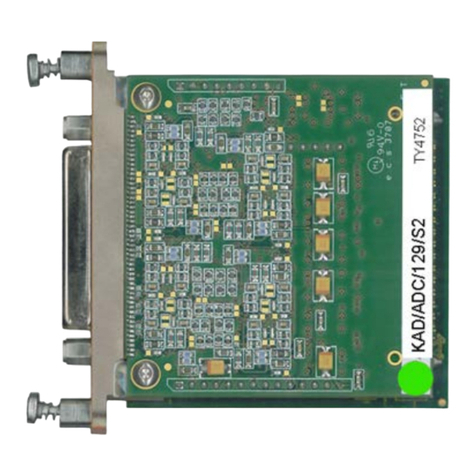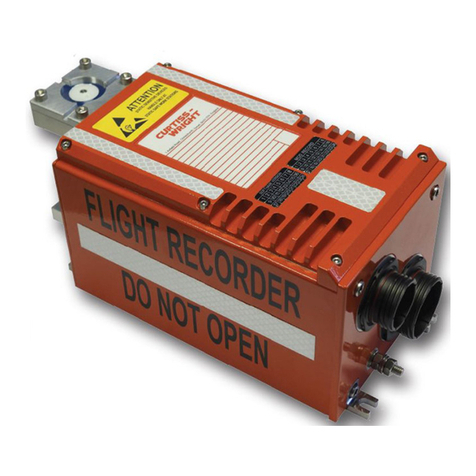
CHAPTER 2: HARDWARE INSTALLATION 5
Connecting the 19-way interface
The following input signals through the 19-way interface are supported:
•START/STOP: this signal starts and stops a recording.
•EVENT: this signal increments the event counter and generates an event packet that is recorded in a Packet
CAPture (PCAP) file, in sequence with the incoming Ethernet frames. This feature is used for marking key
events and maneuvers during the recording process.
•Digital IRIG-B time source in: this is used in systems where there is no IEEE 1588 Precision Time Protocol
(PTP) synchronization over the network or GPS antenna. Time input is required to timestamp each Ethernet
frame that is recorded in a PCAP file. Where there is no PTP, GPS antenna, or IRIG-B time source, the multi-
role recorder uses its local clock to timestamp the recorded Ethernet frames. For more information, see “About
time sources” on page 21.
NOTE: On first-generation multi-role recorders the voice signal is taken through the 19-way I/O connector. On the
SSR/CHS/001/B (and all subsequent multi-role recorders) the audio connector is a separate voice connec-
tor (see “Connecting the voice interface” on page 5). Some I/O signals are available only on specific multi-
role recorders; refer to the respective data sheet for more information.
To connect to an external source, assemble a cable that supports RS-422. To assemble and connect this cable, do
the following:
1. Assemble the CON/MMO/001/F19A connector.
See the CON/MMO/001/F19A data sheet.
2. For first-generation multi-role recorders, connect the audio source to the voice interface within the
CON/MMO/001/F19A connector.
3. Connect the CON/MMO/001/F19A to the 19-way I/O connector on the multi-role recorder.
4. Connect the other end of the cable to the external source.
Connecting the voice interface
On first-generation multi-role recorders the voice signal is taken through the 19-way I/O connector. On the
SSR/CHS/001/B (and all subsequent multi-role recorders) the audio connector is a separate voice connector.
A cable is not supplied for this voice signal.
1. Connect one end of the cable to the audio source.
2. Connect the other end to the voice connector.
Connecting GPS
Use an ACC/GPS/001/05M cable (not supplied) to connect the multi-role recorder to a GPS antenna. Refer to the
respective data sheet for the recommended antenna.
1. Connect the SMA male side of the ACC/GPS/001/05M to the GPS connector on the multi-role recorder.
2. Connect the other end to the GPS antenna.
Installing user-modules
Multi-role recorders have up to four user-slots, allowing for a range of plug-in modules to be installed.
When handling and installing modules, be sure to observe all precautions and instructions in the
Handling precautions document that ships with your order.






























